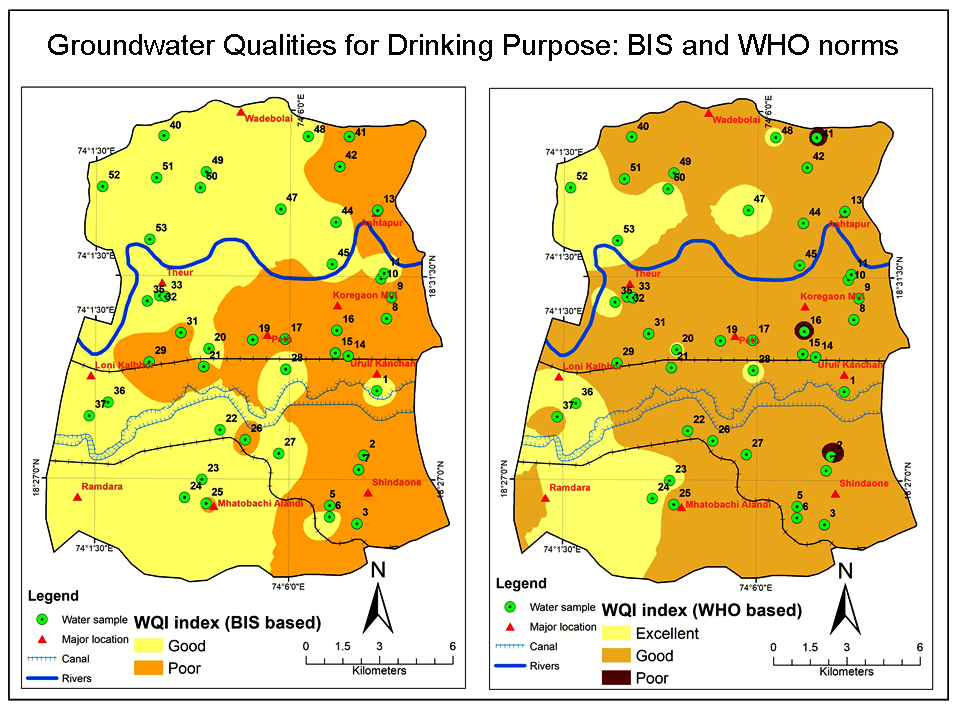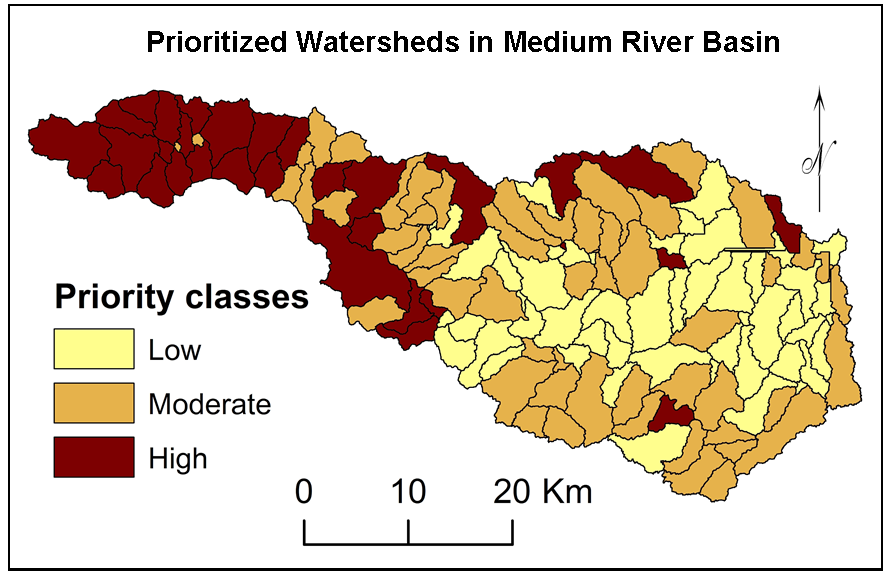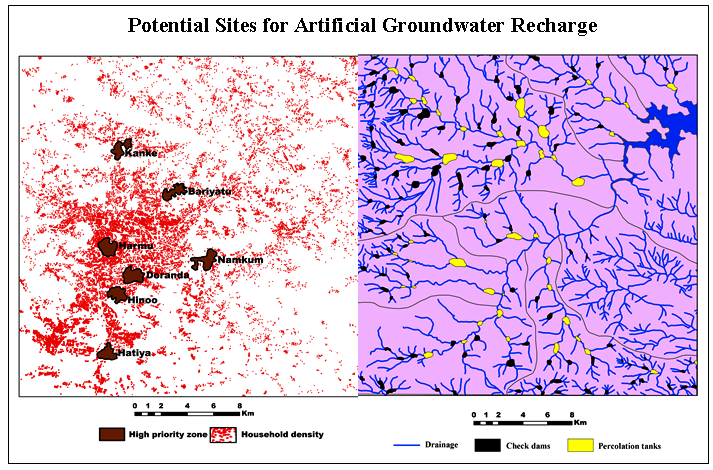Article Title :
Suitability Assessment of Groundwater Quality for Drinking Purpose by Physicochemical Characterization and Water Quality Index from Haveli Region India 
2 (2018)
83-90
Weights , Pune City , Permissible Limit , Groundwater Quality Index , Groundwater pollution , BIS


The emulsification of major constituents in groundwater is accentuated to highlight the impact that is anticipated to be the prime concern due to depleting quality of this resource used for drinking purpose. In view of this, 53 groundwater samples of dug wells taping basaltic water table aquifer located in Haveli taluka adjoining Pune city of Maharashtra, India were collected and analyzed for major cations and anions to evaluate the suitability using water quality index (WQI). The parameters such as pH, Total Hardness (TH), Sodium (Na) and Sulphate (SO4) were assigned with weight 5 and the weight 1 considered as lowest level was assigned to Calcium (Ca++), Magnesium (Mg++), Potassium (K+), Carbonate (CO3--), Bicarbonate (HCO3-) and Phosphate (PO4) and observations were made to know the groundwater quality of the study area. Using these values, the WQI was calculated that revealed according to BIS standards 57% of samples falls in good category, and 43% samples in poor category, while according to WHO standards 38%, 57%, 6% were representing excellent, good and poor category, respectively.

WQI method is used for evaluation of groundwater quality for drinking purpose.
The groundwater quality indexing is performed based on BIS and WHO standards.
Groundwater samples from dug wells taping basaltic water table located in Haveli taluka adjoining Pune city were collected and analysed for major cations and anions.
About 43% samples were reported in poor category according BIS standards.
About 38%, 57%, 6% samples were representing excellent, good and poor groundwater as per WHO standards, respectively.
Groundwater sample from agricultural land-use is a more contaminated due return flow of agriculture.
APHA, A. WEF, 2005. Standard methods for the examination of water and wastewater, 21, 258-259.
BIS [Bureau of Indian Standards], 1991. Specification for drinking water (IS 10500: 1991).
Foster, S., Hirata, R., Gomes, D., D’Elia, M. and Paris, M. 2002. Ground-water quality protection: a guide for water utilities, munciple authorities and environment agencies. The international Bank for Reconstruction and Development/World Bank Technical Paper. Washington, D.C
GSI, 2007. District Resource Map (DRM). Geological Survey of India. Govt. of India, Pune.
Rubia, J, D. C. and Singh, V. K., 2015. Urbanization and its impact on groundwater: An overview. Workshop on Groundwater Issues and Challenges in Chhattisgarh State with Special Reference to its Conservation, Security and Quality. Central Ground Water Board, NCCR, Ministry of Water Resources, River Development and Ganga Rejuvenation. Govt. of India, 127-136
WHO [World Health Organization], 2004. Guideline for drinking water quality, 3rd edn. Recommendation World Health Organization, Geneva.
WHO [World Health Organization], 2004. Guideline for drinking water quality, 3rd edn. Recommendation World Health Organization, Geneva.





